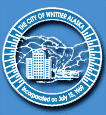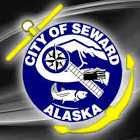
 |
 |
 |
 |
 |
 |
 |
 |
 |
 |
 |
||||||||||
|
Where your great Alaskan adventure begins!
     |
SOLDOTNA: is a beautiful, vital, growing city with a lot to offer to residents and visitors alike. In the summer check out our elevated boardwalks, river fishing, camping, canoeing, wildlife viewing, bike trails, and hiking. In the winter, you can enjoy world-class ski trails, snow machining, snow shoeing, or ice skating at our Olympic-size hockey rink. The history of the City of Soldotna begins with homesteading that occurred in the late 1940s, although Native Alaskan Athabaskan peoples had lived and used the areas around the Kenai River for many thousands of years prior to the City’s establishment. After World War II, veterans were given priority in homesteading in this area and settlement began to grow. The construction of the Sterling Highway from Anchorage and the Kenai Spur Highway occurred in the 1950s, resulting in increased settlement in the area. A post office for Soldotna was established in 1949. Oil was discovered at the nearby Swanson River area in 1957, giving the population and economy of the area another major boost. Soldotna’s location at the junction of the Sterling and Kenai Spur highways resulted in the area becoming a major location for retail trade, services and government on the Kenai Peninsula. The City of Soldotna incorporated as a fourth class city in 1960 with 332 residents and an area of 7.4 square miles (4,723.4 acres). Although the major highways were constructed in the 1950s and oil had been discovered in 1957, the population of the area at the time was relatively small. After the Borough was incorporated in 1964 and selected Soldotna as the Borough seat, the City reorganized as a first class city which provided the residents of the City more authority to manage and finance the rapid growth that was occurring. The City’s central location on the Kenai Peninsula and the development of the oil industry on the peninsula and other parts of Alaska resulted in rapid population growth in the City’s first three decades (1960 to 1990). As the City and the oil industry have matured, population growth has slowed. Soldotna was mostly built up and already near its current population by the end of the early 1980s building boom.The City’s pattern of growth has been confined and shaped by natural and man-made features. The Kenai River, local wetlands, and the natural terrain have concentrated development in the western portion of Soldotna, while the three major highways (Sterling Highway, Kenai Spur Road, Kalifornsky Beach Road) have resulted in a linear pattern of commercial development stretching out from Soldotna into the unincorporated areas.
KENAI: Kenai is located on the Kenai Peninsula where the world-famous Kenai River meets Cook Inlet. It is surrounded by spectacular scenery and wildlife, and has a rich history of native and Russian settlements and culture. Kenai is the heart of Alaskan adventure, providing something for everyone. The Kenai River is known for its world-class King Salmon fishing. Kenai industries include oil, natural gas, commercial fishing and tourism. Located near Soldotna, Seward and Homer, Alaska, Kenai is easily accessible from Anchorage via a 30-minute flight or a leisurely and beautiful 3-hour drive, approximately 150 miles to the south. Fly into our Kenai airport or our floatplane basin. Boat into our public dock. Kenai is equipped for both visitors and convention business. Kenai has it all.
NIKISKI: Is an unincorporated area that stretches for several miles on either side of the road. There are motels, trailer and camper parks, grocery stores, restaurants, gas stations, convenience stores, post office, and numerous shops, many clustered in the Nikiska Mall. 911 in case of fire or accident. Nikiski fire department's two stations serve an extensive area that not only includes the northern peninsula and Cook Inlet but reaches across the inlet to a section of the mainland. In addition to general emergency calls, personnel and equipment are further geared to respond to calls from offshore oil and gas platforms as well as oil and chemical industries onshore. Boats and helicopter support are available for rescue operations. The department was a leader in developing paramedic services; the Arctic, Subarctic Aquatic pararescue team and fire training as a combined operation on the peninsula.
CAPTAIN COOK STATE PARK: Encompasses about 4,000 acres of forest, lakes, rivers and salt water beaches. The area offers swimming, a canoe landing and take out point for the Swanson river canoe trails, a good place to fish for silver salmon August and September, picnic sites and camping. The park was named after the famous British explorer Captain James Cook who came to this part of the world in 1778 in the ship "Discovery".
STERLING: Oil was discovered in 1957 in the Swanson river area and a road build to the development from Sterling. The gravel road also opened up the Kenai National Wildlife Refuge (then called the Moose Range) to more convenient camping, picnicking, hunting, fishing and other activities. Sterling remains the getaway to the northern portion of the refuge. Sterling has school, post office, fire station, restaurants, groceries, bars, lodging, gas, and private campgrounds with hookups, laundry and showers. You can buy furniture, second hand items, antiques, gifts, and hand made articles.
WHITTIER:Situated
at the head of Passage Canal, the community of Whittier is approximately 58
miles southeast of Anchorage. Whittier is by far the most visited gateway to the
mesmerizing wilderness of Prince William Sound. Each summer, thousands of
visitors arrive at this magnificent port by ship, train, or automobile. The 218
distinguished citizens of Whittier are waiting with open arms to share this
incredible gem of the Alaskan frontier and regale you with our stories of first
hand experiences which come from living in a land like no other.There is no
describing the 22 hours of daylight we enjoy each summer. There is not a bad
seat in the house. As you enter Whittier from North America's longest tunnel,
the panoramic view of the ocean, mountains and glaciers surround you.Our sea
side village is home to an exciting array of wildlife. If you are a birder, come
enjoy our world class collection of raptors such as the Bald Eagle, Great Gray
Owl, and the elusive Peregrine Falcon. Whittier boasts the largest Kittiwake
bird rookery population in the North Pacific. Thinking there might be fish in
these here waters? You are on the right track. The 15,000 square miles of Prince
William Sound is home to one of the richest wild marine fisheries on the planet!
Land animals more your bag? The mountains surrounding Whittier are host to the
shy mountain goat, all manner of weasels, whistling marmots, bear, and the
occasional coyote.
I would certainly be remiss if I left out our marine visitors. During our
glorious summer we are often visited by Humpback and Orca whales plying the 600
foot deep Passage Canal in search of dinner. Land and sea otters along with
seals and sea lions may be keeping a careful eye on you to make sure they will
not have to share their next meal with you. If action is more your style,
Whittier has you covered. The historical 10,000 year old Portage trail is
located on the right as you roll into town. Horsetail Falls and Emerald Point
trails are great improved trails to get your feet wet. Are improved trails too
mundane? I have called Whittier my home for over 20 years and I have yet to
cover 2% of the wild wild wilderness. Bring a compass and a map because your
cell phone will disappoint. Be careful, gravity is no joke! If a wildlife &
glacier day cruise, peaceful kayak excursion or scenic train ride sounds
intriguing, this is a superb destination. As Mayor, I welcome you to our town
and invite you to discover the many opportunities for adventure. Sincerely
Mayor Daniel Blair
HOMER: is located in south-central Alaska, 227 road miles from Anchorage (Alaska’s largest city), near the southern tip of the Kenai Peninsula, 59°38'35" North Latitude, 151°31'33" West Longitude. (Map source: Alaska Islands and Ocean Visitor Center.) , on stunning Kachemak Bay. Made famous as “The End of the Road” in Tom Bodett's tales, Homer is at the end of the Sterling Highway. Homer is accessible by road, boat, and daily flights from Anchorage. A home base for great fishing (“The Halibut Fishing Capital of the World”), kayaking, bear viewing, hiking, foodie and art vacations, Homer is quickly becoming known also as the Eco and Adventure tourism capital of Alaska. Nestled among rolling hills, this seaside – and truly seagoing - community has many unique attractions. Home port to the F/V Time Bandit of the Discovery Channel’s “Deadliest Catch” fame, Homer's museums, art galleries, fine dining (you will be amazed at the quality of our restaurants) and deluxe accommodations, all help create Alaska-sized memories to last a lifetime. The Homer Spit ("spit" is a geological landform term) is the second longest in the world and was recently named one of the best 100 beaches in the United States for its incredible views and variety of wildlife along the wonderful 4.5 mile multi-use trail that runs from its base to its tip – the true end of the road on Alaska’s Highway 1. Just across the Bay, less than 10 miles from the Spit, is the state's only designated wilderness park – Kachemak Bay State Wilderness Park. Local water taxis specialize in bringing outdoor lovers to the trailheads and campgrounds of the park. This unique combination of location, commerce, beauty, natural resources and wilderness makes Homer a wonderful place to visit, and a great place to live!
